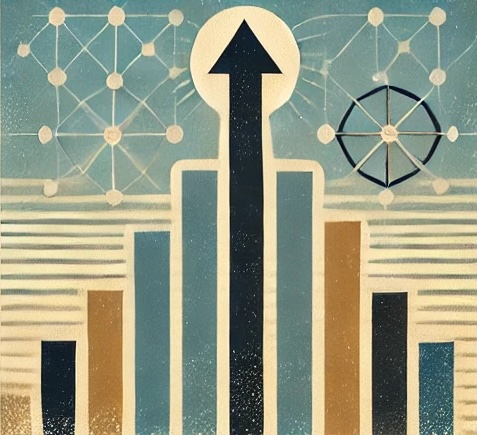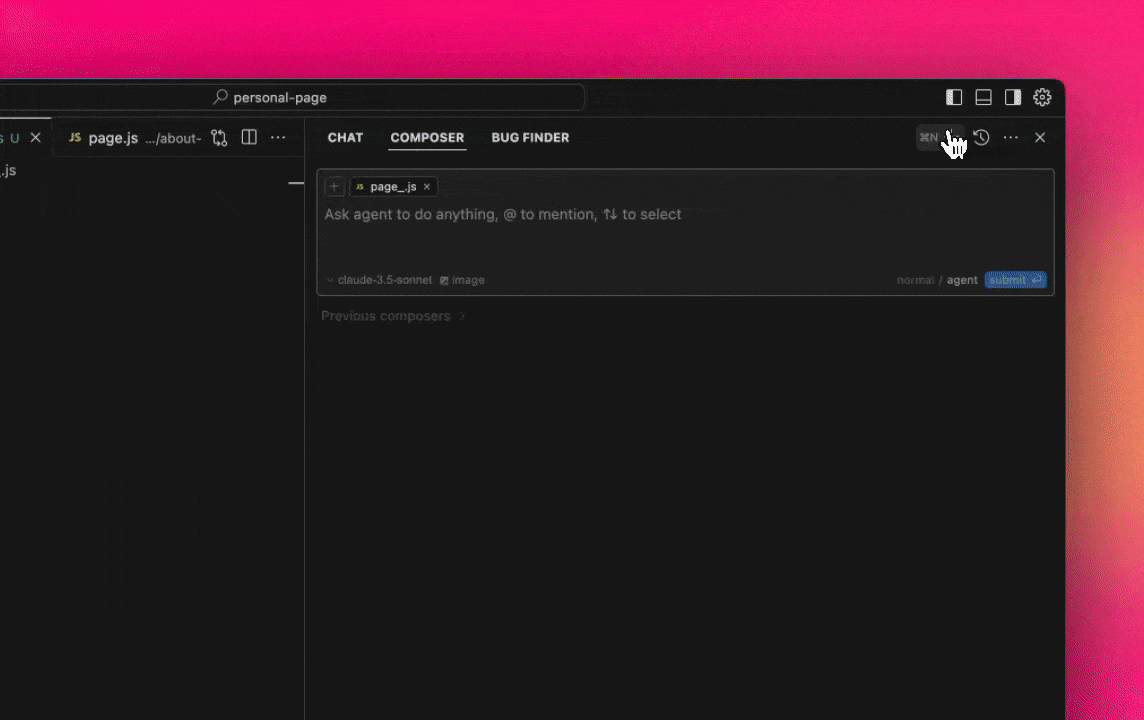Traditionally, an organization's productivity has been limited by how many clicks or keystrokes per minute (CPM) its employees can perform. Each meaningful action, whether drafting a proposal or implementing a new feature demands time, effort, and focus. Actions Per Organization (APO) offers a way to measure the total output a company produces, with each action having its own direction (aligned vs. exploratory) and magnitude (impact).
Aligned Moves vs. Exploratory Moves
Well-run organizations consistently make actions in a shared direction: developing existing products, entering proven markets, and executing tried-and-true strategies. Yet there's massive value in more exploratory, or experimental, actions which we typically call innovation. Historically, these experiments have been costly, leading many organizations to be risk-averse.

Aligned Growth

Exploratory Growth
Composer: Inverting Action Costs
Composer, a product from Cursor, is an oracle for how we will interact with AI. It inverts the cost of generating each action. A single person can now launch many high-value actions in parallel, lowering CPM and boosting APO. This gives individuals a means to trigger a cascade of work with a single command. As this interaction style spreads into other verticals, SaaS costs will decline dramatically, forcing companies to decide how to use the freed-up human capital.

Experimentation as the Core Unit of Work
Just as the assembly line let manufacturers shift labor into new products, AI empowers employees to focus on experimentation. Because AI reduces the complexity and expense of each action, organizations can try more things, faster. Some experiments succeed, yielding new lines of business; others fail, yet the stakes of failure drop dramatically.
The missing piece, until now, was how difficult it is for most individuals to obtain cross-domain knowledge. AI changes this by lowering the barrier to specialized expertise. Historically, combining multiple fields of knowledge has led to breakthrough innovations, and AI now makes that much easier.
The Coming Innovation Arms Race
As the bar for generating large numbers of actions falls, companies will compete to explore new directions swiftly and cheaply as a means to differentiate. Freed from repetitive tasks, employees can reallocate their efforts into small, nimble "strike teams," focusing on emerging opportunities. AI provides real-time oversight, enabling leadership to monitor experiments and gain the confidence to grant teams greater autonomy.
In the near term, we'll see heavy investment in automation for established, directionally aligned tasks, cutting overhead and increasing margins. Longer term, organizations will demand more advanced AI tools and reasoning models. Once an experimental workflow is validated, it can be rapidly automated or scaled up. In this paradigm, AI becomes the "specialist" in any domain, while humans act as "generalists," guiding strategy, creativity, and critical oversight.
Conclusion: APO as the New Metric
Under this new paradigm, APO, the total number of actions an organization can generate and execute, becomes a primary indicator of success. As CPM (the cost of an action) plummets, more human capital shifts toward creative experimentation and cross-domain problem-solving.